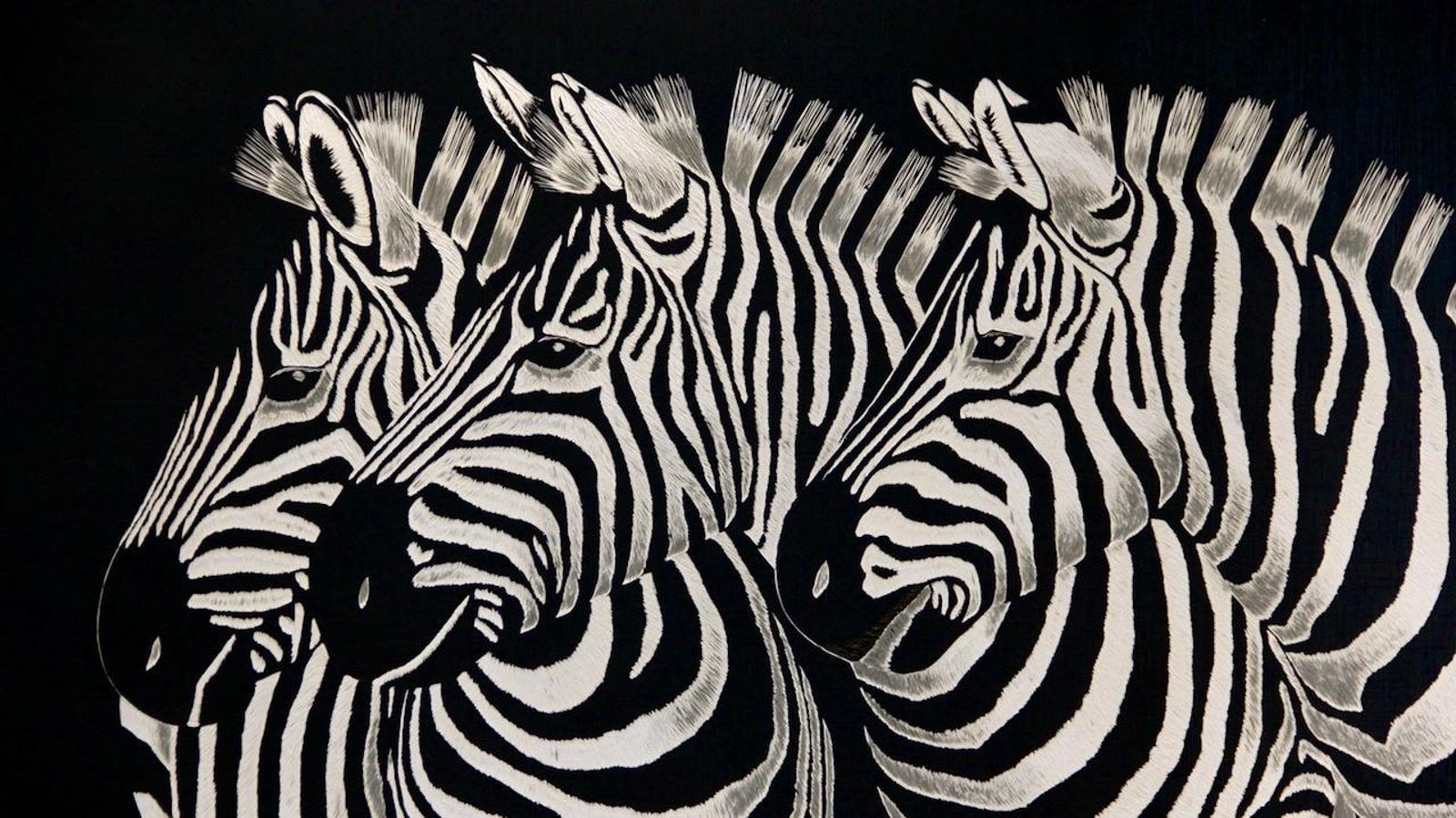Working in reverse to a traditional painter, Hannah Jensen’s art is unique. After adding between 40 and 80 layers of paint to a plyboard canvas – letting each one dry before applying the next – she carves into them by hand with a simple linoleum cutter to reveal various colors and create a detailed image filled with extreme depth, texture and shadow. She explains her creative process.
What is the most important consideration when you first start creating an artwork?
Firstly, it’s believing in the vision, then choosing the right size and colors that will honor the work.
Do you know exactly how it will look like when you start, or are you surprised by the end result?
Often the vision in my head is so strong and has been processed for so long that I know what I am going to create. However, I am still blown away when I get to that last touch and actually see it finished.
What are your sources of inspiration?
Nature! Time in nature, the details of flora and fauna, how nature thrives. Any plant, tree, flower, ocean life, spring growth, change of season – it’s all magic.
How do you come up with the subject matter for your artworks – is there a common theme linking them all?
It is really a reflection of where I am at, at the time. However, I keep returning to animals. That is definitely a common theme and a passion of mine. I want my art to share their stories, be a voice for them.
Take me through your unique technique and the different steps of your creative process: your research and preparation before painting, how many layers of paint, how many different colors you apply, how you carve, the depth of the cut, painting after carving, what tools you use.
I have several ideas that float around in my head. I push that idea until I know it can go no further. I research images and colors that align with my idea. Depending on the work, it depends on how many colors. I generally use two to five colors in a work. However, I have gone up to 10 or more if it’s a tonal work – fur, for example. I order the framed plyboards and the paint and start layering. Each work is laid flat during this process, and I layer for five to five weeks, one to three layers a day. Depending on the season – winter is cold here – and paint takes longer to dry. I use Resene Lumbersider, an acrylic house paint, and a Speedball lino cutter. I draw up the image and begin to carve back through the layers to imitate the textures of the image. Using different pressures reveals different depths of color. I carve and carve and carve until the work is complete, except for the clean-up and final touches. I now paint back subtle washes into the work to bring that final touch and depth. It’s incredible the difference that makes, and really brings it to life. Then it is sprayed with a mat varnish and ready for the wall.
Do you work alone?
I do work alone now. I have shared many spaces over the years and I have loved those experiences. However, having your own space to play audio books all day and be in your own rhythm is bliss.
How long does it take for you to make an artwork?
It depends on the size of the work. A small work, once prepped, can be done in a day. The larger ones: six to eight weeks of carving.
Follow me on LinkedIn.







